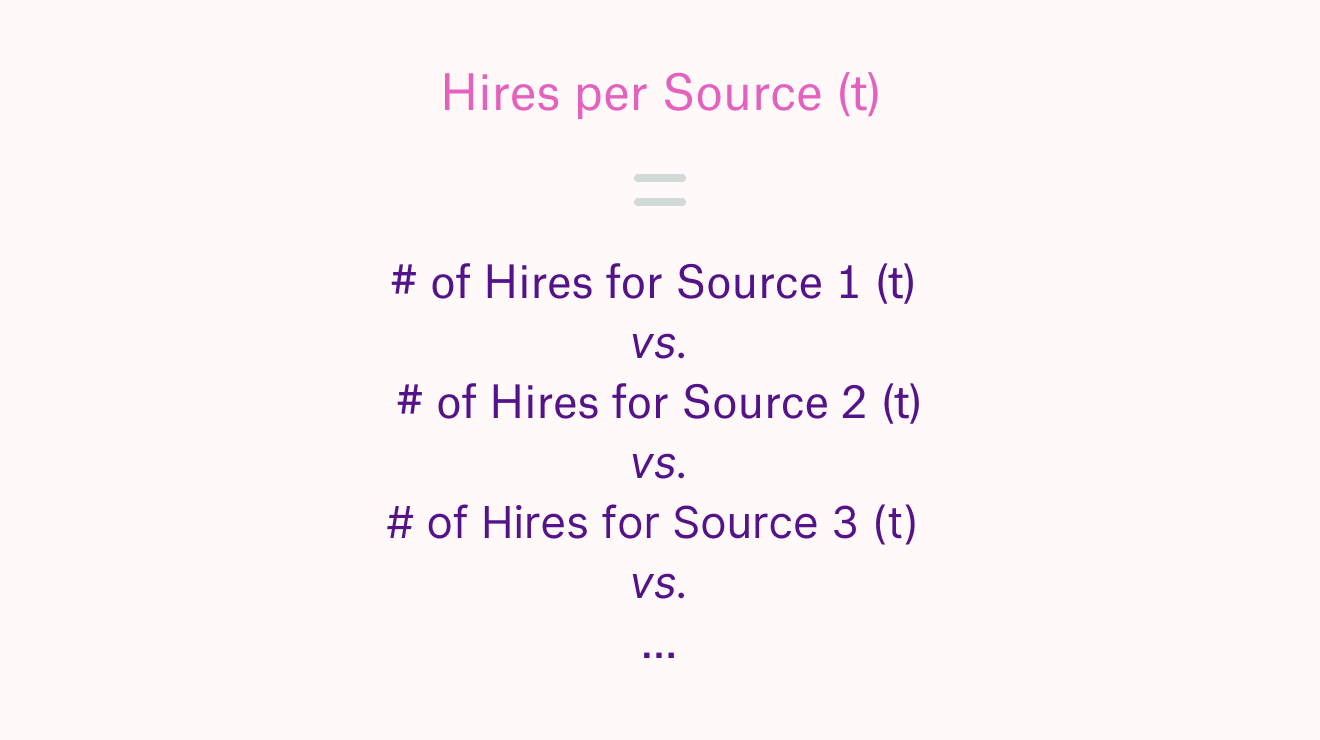Learn how to increase the efficiency of your candidate search through tracking the quality of different candidate sources.
Not all applicant sources are equally successful. Some sources are more efficient, meaning that it takes fewer applicants to get one hire. Other sources, like employee referrals, can give applicants unique insights on your company and reduce time-to-hire.
Let’s explore how to compare these sources and why this is important for your recruitment strategy or approach.
How do I calculate hires per candidate source?
You want to know how well each segment of your applicant pool translates into actual hires so that you can choose wisely where to invest more and which sources are best for your target candidates.
To do this, calculate hires per source across the positions you filled in a set timescale. Hires per source helps you visualize the breadth of sourcing channels and their hiring output.
If you have a lower vacancy rate and slower employee growth, you may want to explore hires across one year to get a more stable metric. Faster-growing companies with more turnover may hire for the same number of positions in a few months.
To calculate hires per each source of candidates, divide the hires you’ve made in the timeframe of your choosing based on how they applied to your role.

A simple way to use this formula is to pick a time period, say, the last quarter or year, pull out all your hires, and go through each. Note the source of the hire, and every time you encounter one, increase the count by 1. You will end up with a total count of hires per source.
What’s next?
Now that you know which sources are most efficient for your target audience, you can reallocate your hiring budget so that you invest more in relevant sources and save time allowing your recruiters to focus on a more personalized approach to relevant candidates.
For a more detailed picture, look at the efficiency of your hiring sources. You can compare the applicants per hire metric across sources with the hires per source stat. This will tell you how many people applied through each source, and how well those applicant numbers transferred to successful hires.
Adding the efficiency of each hiring source means that you can adjust for high-traffic sources, like LinkedIn or Indeed, that may win in sheer numbers but can be hit-or-miss on the quality side.
How to automate answering this question with Orgnostic
If you would like to automate getting the answer to this question, all you need to do is connect your ATS to Orgnostic, and it will show you how different sourcing channels compare.
Orgnostic cross-references the ATS info on applicants and the sourcing channels they came from with the results of their application to find the number of hires. It then stacks up the number of hires from each source category against each other to see the raw values.
Additionally, if you want to analyze how cost efficient each of your sources are, you can also do that with Orgnostic. You might see that large-scale, inexpensive job boards result in more hires, but also have many more applicants than referrals or recruiter sourcing where bonuses and recruiter costs may be higher. If Indeed brings in 200 applicants and 5 get hired, but referrals get you 10 applicants and 2 hires, Indeed is a less efficient source by the numbers though it gives you more hires overall.
Finally, Orgnostic’s filters help you break down these numbers by the job’s department, location, role, and seniority or by the demographics of your hires. That way, you can pinpoint the best applicant sources in different regions and compare which channels work best for hiring a broad range of applicants.
From the Talent Acquisition series: